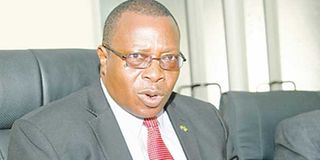Tanzania’s economic outlook positive, Mpango assures MPs

Finance minister Philip Mpango. Photo |File
What you need to know:
- The minister for finance and planning Dr Phillip Mpango has said the economy has continued to remain in a good shape, with major indicators including GDP, Inflation, Exports and Imports, Currency, Interest rates and lending continued to remain positive.
Dar es Salaam. As Tanzania prepares to graduate into middle income status by 2025, Finance minister Philip Mpango has maintained that the economy remains stable, with all indicators being positive.
Presenting the government proposal for the Second Five Year National Development Plan (2016-2021) and Budget Framework for FY2019/2020 to lawmakers in Dodoma yesterday, Dr Mpango said the government will continue to implement both fiscal and monetary policies to continue sustaining the economy.
He said the gross domestic product (GDP), using 2015 constant prices, grew by an average of 6.8 per cent during the third quarter of last year compared with five per cent growth recorded during similar period of the previous year, contributed by growth in transport and storage, construction, information and communication, manufacturing and water sectors.
“Inflation rate low and stable on single digit, at 3 per cent in January, this year, from an average of 4 per cent in January, last year, caused by sufficient food stocks, as well as accommodative monetary and fiscal policies,” he said.
The minister said extended broad money supply (M3) also grew by an average of 6.6 per cent in 2018 compared with an average of 5.5 per cent recorded in 2017 due to increased lending to private sector.
He said the local currency has continued to remain stable against global major currencies due to implementation of monetary policy, the use of gas to generate electricity, which has reduced fuel imports and improved local production of goods which were previously being imported.
Interests on government debt instruments was lowered to an average of 6.4 per cent compared with 11.1 per cent recorded in 2017 while those of loans to private sector slightly went down to 17.4 per cent in 2018 from 17.8 per cent recorded in 2017.
“Credit to private sector grew by 7.3 per cent as at January this year from 2 per cent in a similar month in 2017, and have continued to grow following the implementation of accommodative monetary policy to promote higher level of liquidity in financial markets,” he said. Some sectors, which received the high levels of credit were personal loans, which accounted for 27.9 per cent of all loans, followed by trade, manufacturing and agriculture.
The value of export of goods and services reached $8.3 billion during the year ending January, 2019 while imports reached $10.4 billion, the minister said, adding that the current account has a deficit of $2.9 billion due to increased imports of capital goods for development projects.
According to the minister, the levels of international reserve has remained at $4.8 billion as at January this year, which is sufficient to cover 4.8 months of imports of goods and services. The level is higher than the East African Community (EAC) regional ceiling of 4.5 months of imports.




